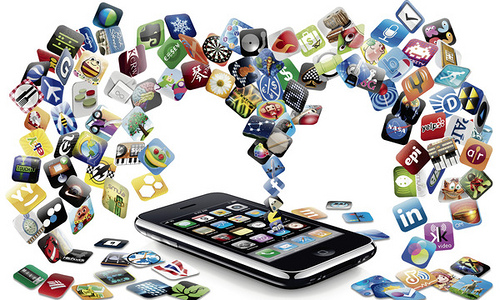The literature on mobile
learning points to a variety of benefits that mobile phones could have on the
educational sector. For heuristic purposes, the impacts of mobile phones on
educational outcomes that are identified in the mobilelearning literature can
be classified into two broad categories. On the one hand, mobiles supposedly
impact educational outcomes by improving access to education while maintaining
the quality of education delivered. On the other hand, mobiles purportedly
impact educational outcomes by facilitating alternative learning processes and
instructional methods collectively known as new learning.
The Role of Mobiles in
Improving Access to Education In theory, mobile learning increases access for
those who are imobile or cannot physically attend learning institutions – those
who would not otherwise be able to follow courses in a traditional educational
setting due to the constraints of work, household activities, or other
competing demands on their time. Mobile learning makes education more
accessible in that it enables learners to pursue their studies according to
their own schedule. The portability of mobile technology means that mobile learning
is not bound by fixed class times; mLearning enables learning at all times and
in all places, during breaks, before or after shifts, at home, or on the go. Interestingly,
however, while mobile learning is
portable, it is not necessarily associated with physical movement. According to
a study conducted by Vavoula, few people actually utilize the time spent in
transit to learn (Sharples, Taylor, & Vavoula, 2005, p. 3).mobile learning,
as Visser and West (2005) suggest, can also increase access in those situations
where cost represents a significant barrier to learning (p. 132). For those in
rural or remote areas where environmental and infrastructure challenges hinder
other learning modalities, particularly e-learning, mobile learning presents
great opportunities. For the individual learner, mobile technology is much less
costing than other technologies like personal computers and broadband connections
that are necessary for e-learning. The ubiquity of mobile phones, moreover,
means that educational services can be delivered with learners’ existing resources.

In as much as mobile technology presents a less cost- medium for learning, it represents an important avenue by which to reduce the gap between the rich and poor in contemporary society where access to knowledge and information is increasingly important (VanWeert, 2005). In regards to cost, the benefit of increased access afforded by mobile learning is particularly relevant in the developing countries. Many developing countries are completely duldging investments in costly, fixed telephone infrastructure for the installation of mobile phone networks (Motlik, 2008; Sharples, Taylor, & Vavoula, 2007, p.224; Traxler & Dearden, 2005). Thus, mobile learning provides a potential way for the expansion of educational programs to large number of people rather than the e-learning model that has been adopted in much of the developed world. Mobile learning allows a method of educational delivery that could be more cost-effective than e-learning methods, it doesn’t mean that many people are already familiar with mobile phone applications (Motlik, 2008). In as much as mobile learning exerts an impact on educational outcomes by increasing access, mobile learning represents a continuation and improvement of distance learning through increased utility and applicability (Keegan, 2002, p. 7). Mobile learning, the literature suggests, broadens the availability of quality education materials through decreased cost and increased flexibility while also enhancing the efficiency and effectiveness of education administration and policy.

In as much as mobile technology presents a less cost- medium for learning, it represents an important avenue by which to reduce the gap between the rich and poor in contemporary society where access to knowledge and information is increasingly important (VanWeert, 2005). In regards to cost, the benefit of increased access afforded by mobile learning is particularly relevant in the developing countries. Many developing countries are completely duldging investments in costly, fixed telephone infrastructure for the installation of mobile phone networks (Motlik, 2008; Sharples, Taylor, & Vavoula, 2007, p.224; Traxler & Dearden, 2005). Thus, mobile learning provides a potential way for the expansion of educational programs to large number of people rather than the e-learning model that has been adopted in much of the developed world. Mobile learning allows a method of educational delivery that could be more cost-effective than e-learning methods, it doesn’t mean that many people are already familiar with mobile phone applications (Motlik, 2008). In as much as mobile learning exerts an impact on educational outcomes by increasing access, mobile learning represents a continuation and improvement of distance learning through increased utility and applicability (Keegan, 2002, p. 7). Mobile learning, the literature suggests, broadens the availability of quality education materials through decreased cost and increased flexibility while also enhancing the efficiency and effectiveness of education administration and policy.
Comments
Post a Comment